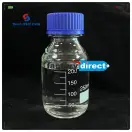-
Categories
-
Pharmaceutical Intermediates
-
Active Pharmaceutical Ingredients
-
Food Additives
- Industrial Coatings
- Agrochemicals
- Dyes and Pigments
- Surfactant
- Flavors and Fragrances
- Chemical Reagents
- Catalyst and Auxiliary
- Natural Products
- Inorganic Chemistry
-
Organic Chemistry
-
Biochemical Engineering
- Analytical Chemistry
-
Cosmetic Ingredient
- Water Treatment Chemical
-
Pharmaceutical Intermediates
Promotion
ECHEMI Mall
Wholesale
Weekly Price
Exhibition
News
-
Trade Service
The person learned from the Guangdong Inspection and Quarantine Department on the 1st that the scientific and technological project "Pesticide Residues in Imported Wine and Background Investigation" undertaken by the National Key Laboratory of Alcohol Testing of Huangpu Inspection and Quarantine Bureau (Guangdong) has passed the technology organized by Guangdong Inspection and Quarantine Bureau.
Project acceptance
.
The investigation found that the pesticide residues in imported wine should be paid attention to, and it is recommended that the relevant standards be revised as soon as possible
.
According to reports, the project team screened the pesticide residue pollution status of imported wine, determined 42 types of pesticide residues in imported wine and their background range, and analyzed the status of pesticide residue pollution in wine in 11 major wine-producing countries around the world.
.
After nearly two years of research, the project team found that pesticide residues in imported wine should be paid attention to
.
Therefore, it is recommended to establish a project as soon as possible to revise the current wine-related standards, increase pesticide residue limits, and fill the gap in the supervision of pesticide residues in imported wine in China
.
In addition, the project team also obtained a utility model patent, which is a special instrument for rapid chemical detection of pesticide residues in wine
.
Project acceptance
.
The investigation found that the pesticide residues in imported wine should be paid attention to, and it is recommended that the relevant standards be revised as soon as possible
.
According to reports, the project team screened the pesticide residue pollution status of imported wine, determined 42 types of pesticide residues in imported wine and their background range, and analyzed the status of pesticide residue pollution in wine in 11 major wine-producing countries around the world.
.
After nearly two years of research, the project team found that pesticide residues in imported wine should be paid attention to
.
Therefore, it is recommended to establish a project as soon as possible to revise the current wine-related standards, increase pesticide residue limits, and fill the gap in the supervision of pesticide residues in imported wine in China
.
In addition, the project team also obtained a utility model patent, which is a special instrument for rapid chemical detection of pesticide residues in wine
.







